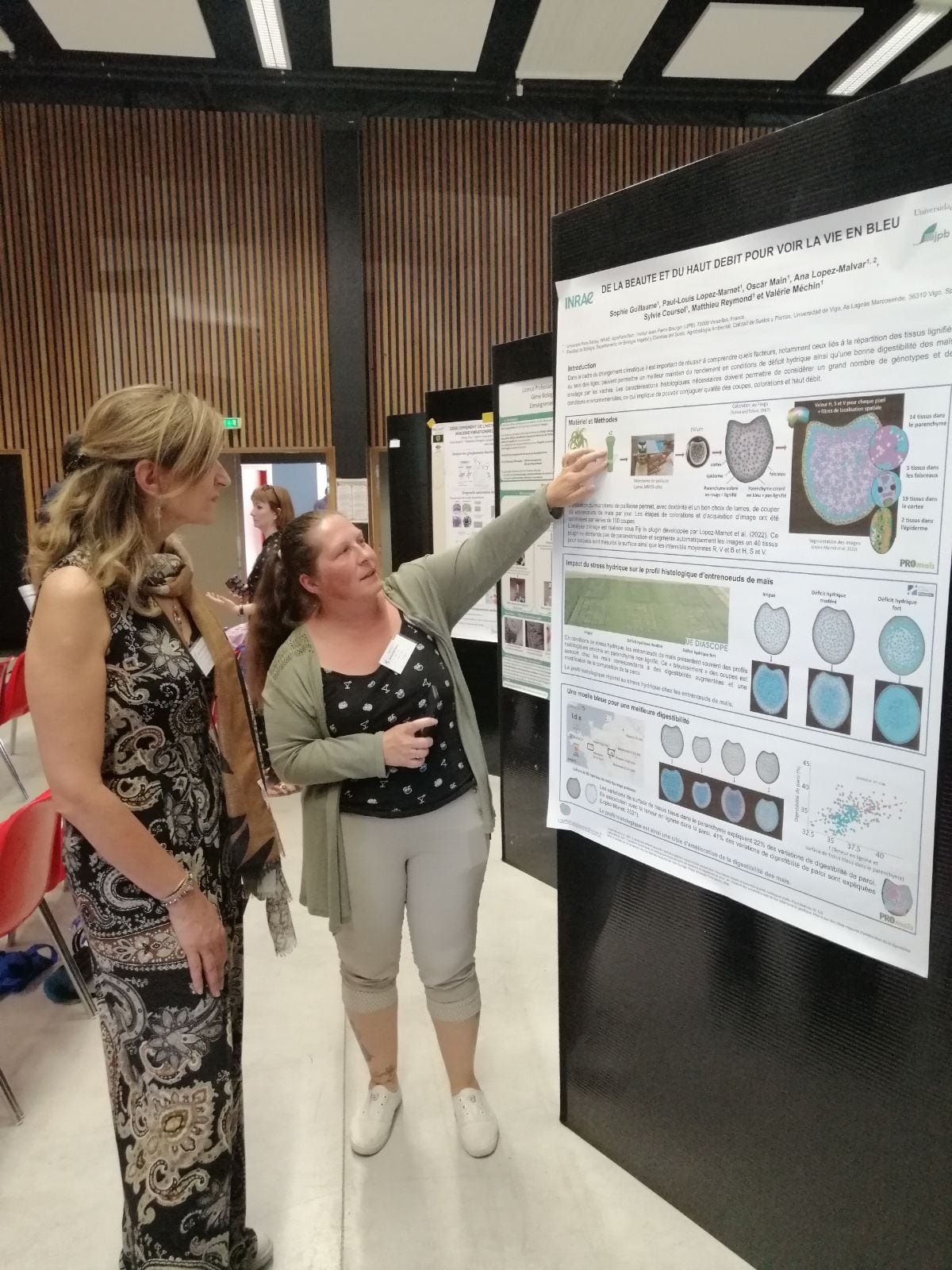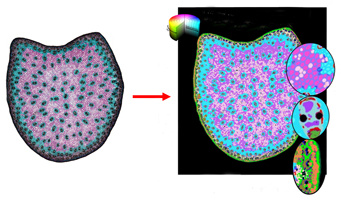Sophie Guillaume won the first prize for posters at the Annual Congress of the French Association of Histotechnology
In the context of climate change, it is critical to understand which factors, particularly those related to the distribution of lignified tissues within stems, can lead to better yield maintenance under water deficit conditions and improve the digestibility of silage maize for cows. The necessary histological characterizations must encompass a wide range of genotypes and environmental conditions, which requires the ability to combine cutting-edge quality, stainings, and high throughput.
The Histological Technique
Using a bench microtome, 50 maize internodes can skillfully be cut per day with the right choice of slides. The steps of staining and image acquisition have been optimized in series of 100 sections. Image analysis is performed using Fiji, a plugin developed by Lopez-Marnet et al. (2022). This plugin automatically segments the images into 40 tissues without the need for parameterization.
The impact of water stress on the histological profile of maize internodes
Under water stress conditions, maize internodes often exhibit histological profiles enriched in non-lignified parenchyma. This "blueness" in the sections is associated with increased digestibility and a modification of the cell wall composition in corresponding maize varieties.
Histological profiling responds to water stress in maize internodes.
A Blue marrow for improved digestibility
The variations in the surface area of blue tissues in the parenchyma explain 22% of the variations in cell wall digestibility. When combined with lignin content in the cell wall, 41% of the variations in cell wall digestibility are explained (Lopez-Manet, 2021).
The histological profile thus becomes a target for improving maize digestibility.


Back

Legend:
Automatic segmentation of images into 40 tissues of maize sections
IJPB Highlight
"Biomass Quality and Interactions with Drought" team QUALIBIOSEC
Associated publication
Lopez-Marnet PL, Guillaume S, V. Méchin D, Reymond M (2022). A robust and efficient automatic method to segment maize FASGA stained stem cross section images to accurately quantify histological profile
https://doi.org/10.1186/s13007-022-00957-0